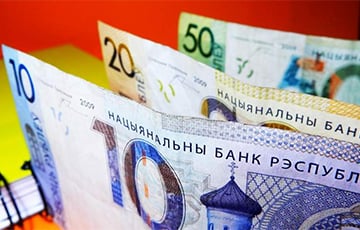The Belarusian Ruble Was Hit From Russia
10- 25.06.2025, 16:07
- 28,178

The foreign exchange market may start to feverish.
The situation on the Belarusian currency market now largely depends on what is happening on the Russian market. Recently, the neighboring country lowered the key rate - an analog of our refinancing rate. The reason is the slowdown in inflation growth. This decision of the Russian Central Bank may weaken the Russian ruble against the dollar, and then hit the Belarusian national currency. "Zerkalo" looked at how the situation in Russia is developing now with the indicators that stimulate the Central Bank of this country to change the key rate and jeopardize the ruble.
What happens to the Russian ruble after the key rate cut, and what happens to the Belarusian ruble
The Central Bank of Russia lowered the key rate from a record 21% to 20% per annum on June 6. Among the reasons for this decision, as voiced earlier, is that "the current inflationary pressure, including sustained, continues to decline."
Economist Anastasia Luzgina previously noted that if the Russian Central Bank decides to lower the key rate, it could lead to a weakening of the Russian ruble against the dollar. This could lead to a similar trend in the fx market of Belarus.
What happens in practice? The opposite situation is observed so far. Thus, since the key rate reduction, the official dollar exchange rate in Russia has fallen from 79.1 to 78.3 Russian rubles (this is the data for June 6 and June 24, respectively).
Similar process took place in our country: if on June 6, the dollar exchange rate, according to the National Bank, was Br3.0008, then on June 24 - Br2.9679.
The Russian Federation intends to continue lowering the key rate "as inflation slows down."
What is the situation in Russia with price growth
Annual inflation in the neighboring country began to slow down, amounting to 9.88% at the end of May. Although recently it was above 10%. Russia's central bank has been raising its key rate (many loan and deposit rates depend on it, among other things) since mid-2023 in an effort to curb consumer activity and lending. This cooled demand and partially restrained price growth.
In addition, this process influenced the strengthening of the Russian ruble on the foreign exchange market.
The Russian authorities expect inflation to fall further to 7-8% by the end of 2025. They also hope for a return to the target level of 4% in 2026.
How things are going in foreign trade
When it comes to Russia's trade with other countries, the situation is deteriorating. At the end of the first four months of this year, the foreign trade surplus - the excess of exports over imports - amounted to $42.4 billion. This is 18.3% less compared to the same period last year. Exports during this time decreased by $7.9 billion to $128.2 billion, while imports, on the contrary, increased by $1.6 billion to $85.8 billion.
Anastasia Luzgina earlier noted: "Here it depends on how the situation with energy costs will develop, how sanctions will work. This will also have an impact on the Russian ruble." According to her assessment, this indicator was also expected to act on the decline of the Russian ruble.
How the situation in Russia affects our currency market
As economists have repeatedly pointed out, the situation in the Russian currency market affects how our ruble feels. For example, when the Russian currency weakens against the dollar, a similar process occurs with ours. This is due to the fact that Russia is the main trading partner of Belarus, and significant settlements between the countries are made in Russian rubles.
For example, in May this year, economist Anastasia Luzgina stressed that the dynamics of the foreign exchange market in the neighboring country remains the main factor that affects the change in the rate of the Belarusian ruble against the same U.S. currency. At that time, the Russian ruble felt more confident - our ruble was also strengthening against the dollar, although it was, on the contrary, weakening against the Russian ruble.











